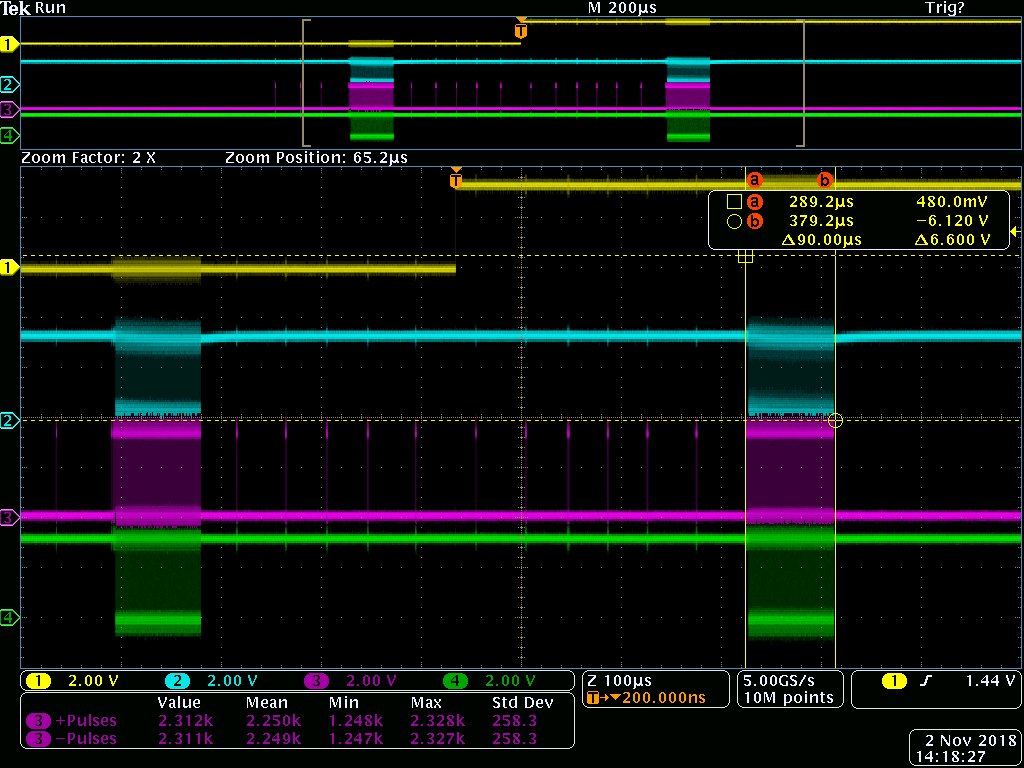Hi guys,
My customer has the below question:
pdk_k2g_1_0_7
bios : 6.46.5.55
xdctools_3_32_01_22_core
I built a QSPI test SW based on QSPI_BasicExample_evmK2G_armTestProject to test my board. My QSPI component is the same as the QSPI on K2G EVM.
My test code uses three QSPI APIs: Board_flashEraseBlk, Board_flashWrite and Board_flashRead as followed in a infinite loop
ioMode = BOARD_FLASH_QSPI_IO_MODE_QUAD;
while(1)
{
Semaphore_pend(semQspi, BIOS_WAIT_FOREVER);
/* Erase block, to which data has to be written */
if (Board_flashEraseBlk(boardHandle, blockNum))
{
SPI_log("\n Board_flashEraseBlk failed. \n");
testPassed = false;
break;
}
/* Generate the data */
GeneratePattern(txBuf, rxBuf, TEST_DATA_LEN);
/* Write buffer to flash */
if (Board_flashWrite(boardHandle, TEST_ADDR_OFFSET, txBuf,
TEST_DATA_LEN, (void *)(&ioMode)))
{
SPI_log("\n Board_flashWrite failed. \n");
testPassed = false;
break;
}
/* Reset receive buffer */
if (Board_flashRead(boardHandle, TEST_ADDR_OFFSET, rxBuf,
TEST_DATA_LEN, (void *)(&ioMode)))
{
SPI_log("\n Board_flashRead failed. \n");
testPassed = false;
break;
}
/* Verify Data */
if (VerifyData(txBuf, rxBuf, TEST_DATA_LEN) == false)
{
SPI_log("\n Data mismatch. \n");
testPassed = false;
break;
}
}
The semaphore, Qspi, is posted every second by a clock module. So, the loop is running every second. I have tried to run every 3 seconds and still got the same issue.
My test is always stalled in Board_flashRead API after several minutes testing. I insert code to toggle GPIO pins in several places to identify the place where the code is stalled.
and found it is waiting a word completion interrupt to post a semaphore forever.
In C:\ti\pdk_k2g_1_0_7\packages\ti\drv\spi\src\v0\QSPI_v0.clock
Line 884
if (object->qspiMode == QSPI_OPER_MODE_IND_XFER)
{
/* Only in indirect transfer mode, wait for the lock
posted form the word completion interrupt */
SPI_osalPendLock(object->transferComplete, SemaphoreP_WAIT_FOREVER);
}
The issue is gone if I change ioMode
from
ioMode = BOARD_FLASH_QSPI_IO_MODE_QUAD;
to
ioMode = BOARD_FLASH_QSPI_IO_MODE_SINGLE;
Q1: How is the word completion interrupt generated? How to identify it from probing QSPI signal lines?
Q2: Can the issue be resolves if I change SemaphoreP_WAIT_FOREVER to a limited time and recall Board_flashRead API if it returns error. I am not sure if I need to check/clean interrupts or additional stuff before call Board_flashRead again if it fails previously.
Thanks,
Brian


